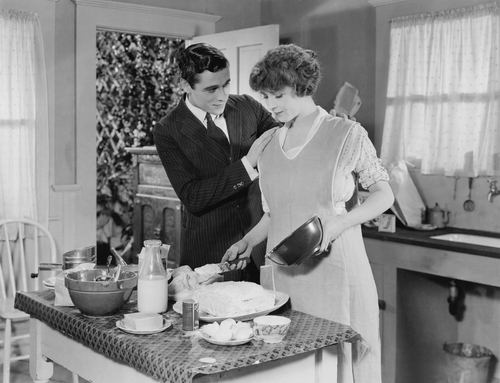Traditional Marriages and Attitudes to Gender Diversity at Work
This is one of our free-to-access content pieces. To gain access to all Ideas for Leaders content please Log In Here or if you are not already a Subscriber then Subscribe Here.

Is there a link between the structure of a man’s marriage and his attitude to gender diversity in the workplace? According to this Idea, there certainly is; men in more traditional marriages are more likely to have more unfavourable attitudes towards women in the workplace than their counterparts in modern marriages. Read on to find out why this is important for organizations to acknowledge and understand.
The division of labour between men and women in society has been steadily undergoing change. Today, there are more women in the workplace than ever before; with calls for more female representation at the highest levels of organizations, this trend looks set to continue and increase. As such, men in today’s workforce are more likely than ever to work with, around, and perhaps, for a woman.
This shift has meant that attitudes, beliefs and behaviours related to gender in the workplace are vital to understand in order to ensure discrimination in this context is avoided. In their 2012 working paper, Sreedhari Desai, Dolly Chugh and Arthur Brief consider the role of marriage in these attitudes, and whether interactions between men and women at work may be influenced by the marriage structure the men have at home. They predicted that men embedded in traditional marriages would think about and act towards women in the workplace more negatively than their counterparts in modern marriages.
Desai et al. describe ‘traditional marriages’ as those where it is the male spouse’s primary responsibility to earn wages that provide for the family’s well-being, while the female spouse’s primary responsibility is to carry out family and home-oriented tasks that facilitate the husband’s wage-earning.
Overall, through five separate studies, they found that men in more traditional marriages tend to view the presence of women in the workplace unfavourably; perceive that organizations with higher number of female employees operate less smoothly; find organizations with female leaders unattractive; and are more likely to deny qualified female employees opportunities for promotions.
In addition, they also found that entry into traditional marriage structures from a state of being single is associated with a change in attitude towards women in the workplace.
Methodology: To test their hypothesis, the researchers conducted five studies with a total of 993 married, male participants. They used a combination of secondary data, laboratory data and longitudinal data from students and managers in both the US and the UK.
In one of the studies, participants evaluated a recruitment letter from a fictional company and were told that their help was needed to evaluate the letter for potential respondents. In one set of letters, the recruiters were given male names and in the other, female names. In addition, the letters signed by female recruiters also included a description of their commitment to ensuring gender diversity on the board of directors. Desai et al. found that men in traditional marriages viewed the more gender diverse organizations less attractively.
As the researchers point out, the attitudes, beliefs, and corresponding behavioural tendencies that members of an organization bring to work are important to understand, especially that men in traditional marriages may represent a potentially influential group.
Clearly, the marital status of employees cannot be controlled, but what organizations can do is establish responsibility for diversity. Such responsibility can entail the following:
These initiatives should not focus on men in traditional marriages but rather, reflect an awareness of where subtle prejudices and negative stereotypes may lie.

Ideas for Leaders is a free-to-access site. If you enjoy our content and find it valuable, please consider subscribing to our Developing Leaders Quarterly publication, this presents academic, business and consultant perspectives on leadership issues in a beautifully produced, small volume delivered to your desk four times a year.

For the less than the price of a coffee a week you can read over 650 summaries of research that cost universities over $1 billion to produce.
Use our Ideas to:
Speak to us on how else you can leverage this content to benefit your organization. info@ideasforleaders.com